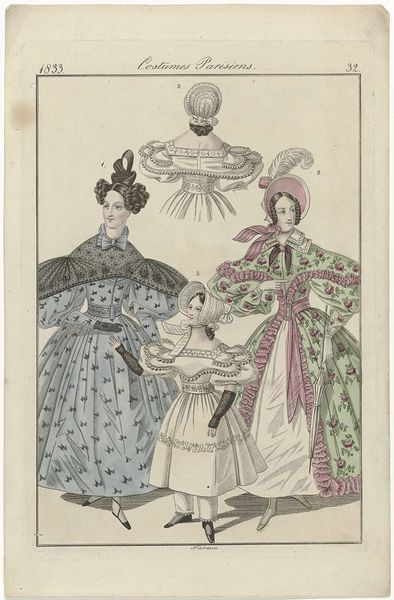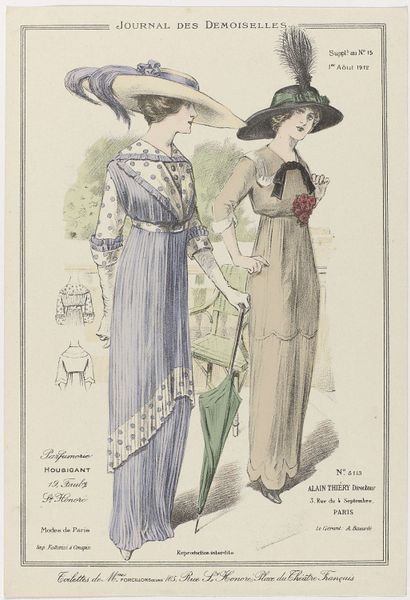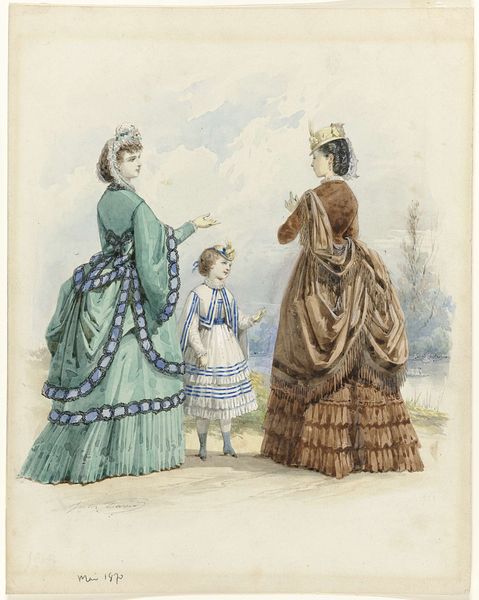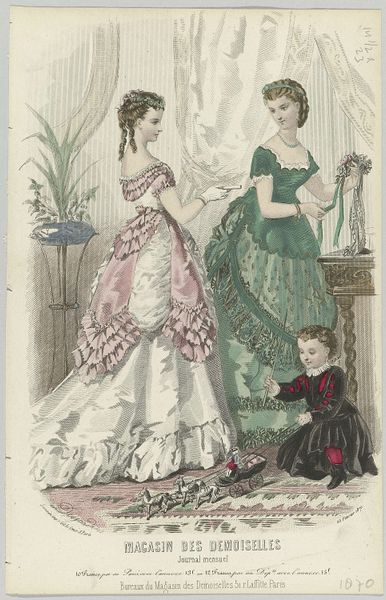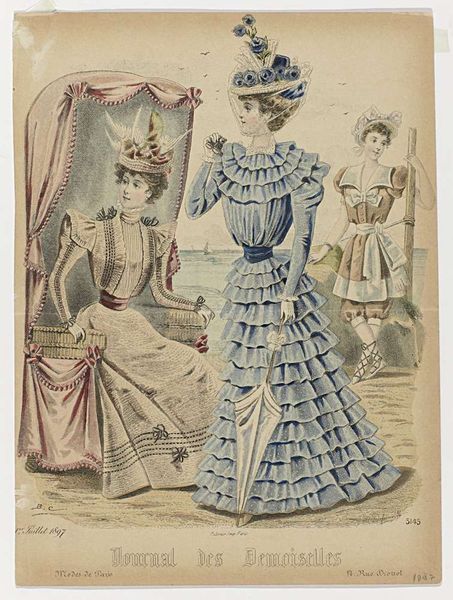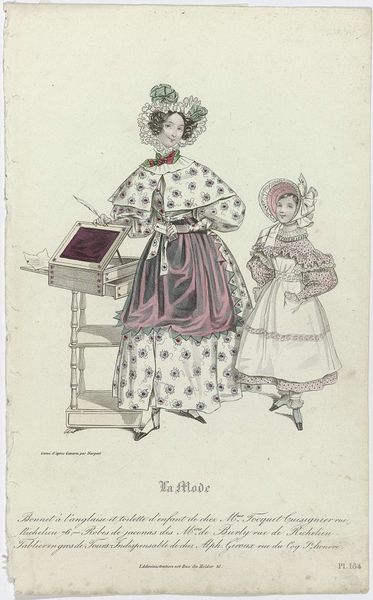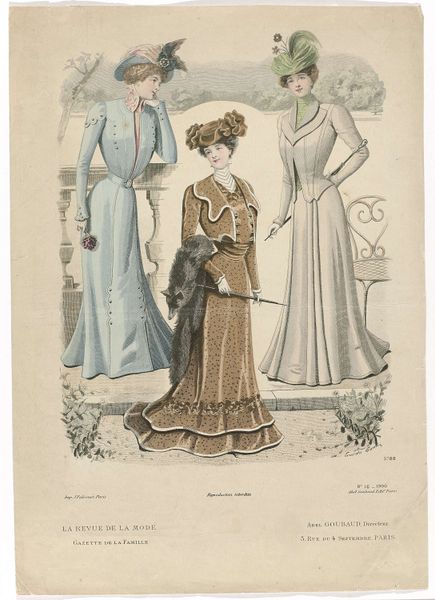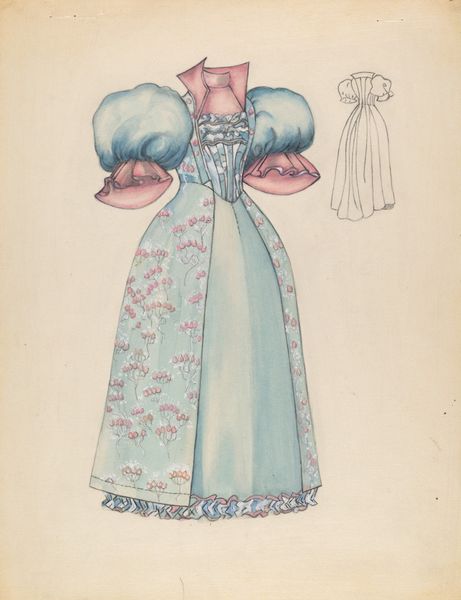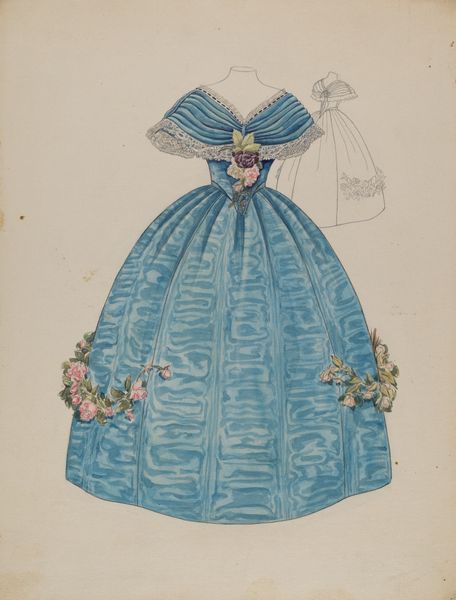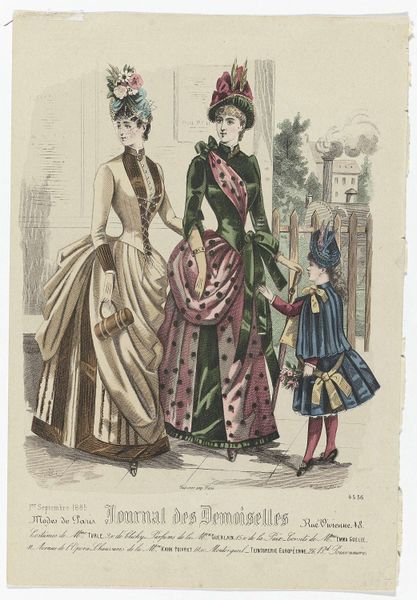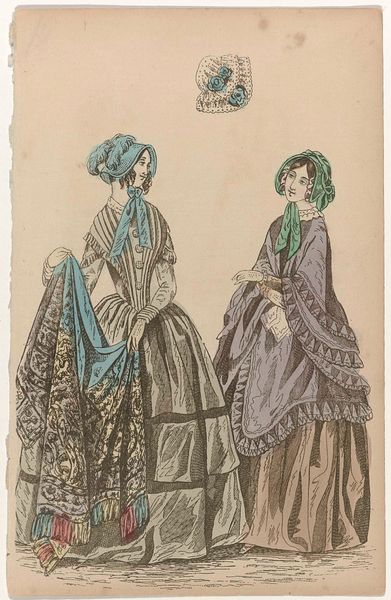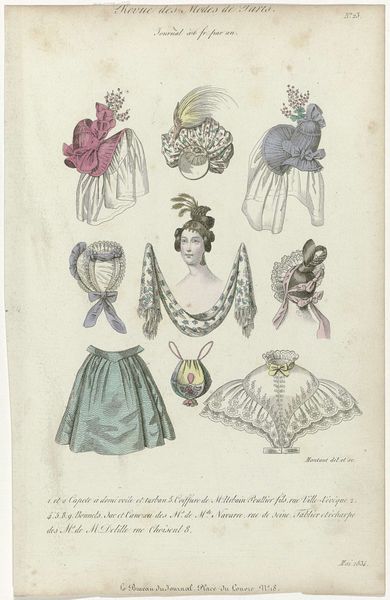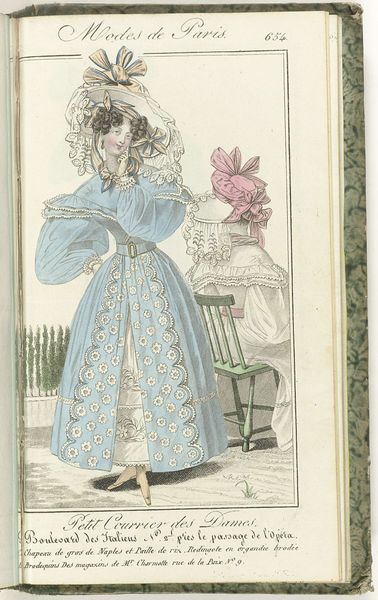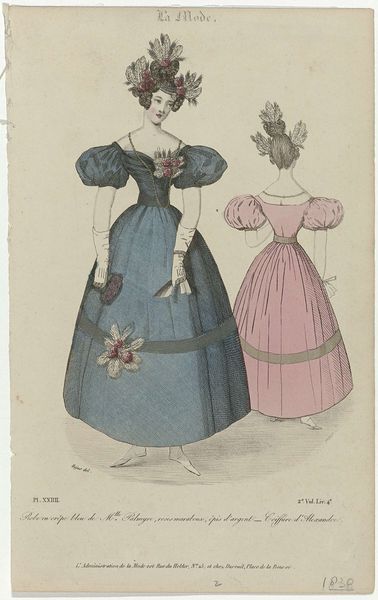
# print
#
figuration
#
historical fashion
#
romanticism
#
watercolour illustration
#
genre-painting
#
fashion sketch
Dimensions: height 270 mm, width 171 mm
Copyright: Rijks Museum: Open Domain
Curator: Let's discuss this fashion plate, "Les Modes Parisiennes, juin 1850: Lingeries" currently housed in the Rijksmuseum. It presents an aesthetic ideal heavily steeped in the social stratification of mid-19th century Paris. Editor: The delicacy is remarkable! I see immediately the texture of the fabrics rendered by etching with such precise lines. The emphasis on craft suggests the rising industrial textile production simultaneously enabling and threatening handmade luxury. Curator: Exactly. Look closely; it presents both a mother figure in an elaborate dress, flanked by two children, seemingly offering flowers. These gendered roles, these constructed intimacies, are reinforced by very deliberate visual cues like clothing, accessories, and posture. The whole image reinforces the idea of the woman as the center of a domestic, yet fashionable world. Editor: Absolutely. The artist makes material production quite clear with the detailed studies above the scene. Lace was especially important; the kind of detail that demands skillful, laborious handiwork while simultaneously referencing the larger economic system which produced, distributed, and consumed it. Do you think that juxtaposition might emphasize the commercial aspect more than the maternal? Curator: It's a difficult line to draw, isn't it? While the imagery does offer insight into family roles and how these roles were carefully designed, it primarily functioned as advertisement for the wealthy woman's sartorial life. It presents "femininity" as something produced, purchased, and performed, deeply embedded in broader structures of power. What does it mean, then, for those who could not afford to perform it? Editor: This type of image served not only to present these specific fashions but the very concept of high fashion as an exclusive experience to consume. Even the lingeries denote both intimate care, labour, and the wearer’s implied comfort and idleness, revealing the nature of work within domestic space. Curator: A very apt analysis. The lingeries’ presence underlines the commodification of both labor and intimate moments within the social milieu of mid-19th century Paris. Editor: Precisely. I’m constantly amazed by the levels of information we gain by approaching seemingly decorative work in this manner. Curator: As am I! Examining the work through socio-historical and material lenses, allows us to see its many layers, even today.
Comments
No comments
Be the first to comment and join the conversation on the ultimate creative platform.
